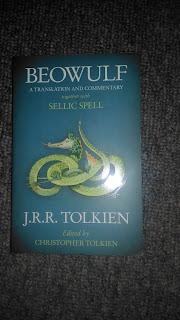AFTER much thought, I have decided to base my Project Kaiser rules around Bob Cordery's Portable Wargame series of books.
In particular I am adapting the late-19th century rules from his original publication, The Portable Wargame (Eglinton Books 2017).
 |
| The Portable Wargame … a modern classic |
Because the figures for my 150th anniversary refight of the Franco-Prussian War are 54mm toy soldiers, I will be using a 5in square grid.
By putting my two wargame tables together, I can create a grid of 14x11 squares.
You will need Cordery's book to understand the brief summary of my rules that follows.
I have changed a few of his concepts - sometimes to fit in with how I like a wargame to work, sometimes adapting ideas from Neil Thomas's book Wargaming Nineteenth Century Europe, and sometimes to give the rules a more-distinct flavour of the Franco-Prussian War.
The summary below mainly covers the changes I have made to Cordery's core rules, and below that I give my reasons.
UNITS
Type Strength Points Move Weapon Range
French Infantry 4 2 4
German Infantry 4 2 3
Cavalry 2 3 -
French Imperial Artillery 4 2 6
French Republican Artillery 4 2 9
Prussian Artillery 4 2 12
There is no separate commander figure as the huge numbers of men involved in the battles would make such a figure disproportionate.
VICTORY (replaces Exhaustion Point)
An army has lost once it loses more than half of its total of starting strength points OR more than half of its starting units.
TURN SEQUENCE
Turns are alternate (aka IGOUGO). Defender goes second. If neither side is obviously on the defensive, dice for who goes first in turn one and continue with alternate half-turns.
1. Artillery fire.
2. Move activated units. To be active, a unit needs to roll a minimum die score.
Prussians and Garibaldi Redshirts: 2.
Others, including non-Prussian Germans: 3.
Elite: +1. Poor: -1.
3. Rifle fire (available to inactive as well as active troops).
4. Resolve melees.
ARTILLERY FIRE
Line-of-sight firing only.
Roll a die, needing a 4 to score a hit.
Prussian: +1
French Imperial: -1
Target in cover: -1
Firers have more than 3 strength points: +1
Firers have fewer than 3 strength points: -1
MOVEMENT
No deduction for firing (or for planning to fire).
RIFLE FIRE
Roll a die, needing a 4 to score a hit.
Firers moved this turn: -1
Target in cover: -1
Firers have more than 3 strength points: +1
Firers have fewer than 3 strength points: -1
MELEEING
A melee occurs when a unit tries to enter a square occupied by an enemy unit.
Both units roll a die, needing a 5 to score a hit (if, with modifiers, the score is 8 or more, then two hits are inflicted).
Attacking in flank or rear: +1
Being attacked in flank or rear: -1
Enemy uphill: -1
Enemy in cover: -1
Unit is infantry or artillery with more than 3 strength points: +1
Unit is infantry or artillery with fewer than 3 strength points: -1
Unit is cavalry with fewer than 2 strength points: -1
Unit is cavalry fighting infantry: +1
Unit is infantry fighting cavalry: -1
Unit is cavalry fighting artillery: +2
Unit is artillery fighting cavalry: -2
Unit is infantry fighting artillery: +1
Unit is artillery fighting infantry: -1
A unit that wants to break off from a melee (as opposed to withdrawing as the result of a hit) must move in a straight line directly away and end its turn with its backs to the enemy.
ALL OTHER RULES
All as in The Portable Wargame, unless a scenario requires a rule to be modified.
THE THINKING BEHIND THE CHANGES
UNITS
Cordery uses strength points of four for infantry, three for cavalry and two for artillery. I have debuffed cavalry and upgraded artillery to make them in line with my reading of the Franco-Prussian War.
Weapon ranges are largely based on Thomas's figures.
I have removed the ability of cavalry to fight dismounted with rifles and/or carbines as that basically did not happen in the Franco-Prussian War, at least not at a division or brigade level.
TURN SEQUENCE
Prussian staff work was ahead of its time, which is why Prussian units are more likely than most other units to activate. Garibaldi's Redshirts showed similar abilities.
ARTILLERY FIRE
Cordery's artillery needs a 5 to score a hit, but guns using line-of-sight get a +2 modifier, meaning they only need a 3. I am only using line-of-sight because howitzers were largely anonymous in battles involving many tens of thousands of troops, so it would make sense if my artillery only needed to roll a 3. I am making it 4 because I have also added modifiers for a unit's strength points, so an artillery unit with four strength points gets +1, which means it only needs to roll a 3 to score a hit. I have introduced modifiers for the number of strength points because it seems strange that a unit at full strength can fight as effectively as a unit with only one strength point remaining.
The modifiers for Prussian and French imperial guns represent the quality of the guns and the respective armies' use of guns.
RIFLE FIRE
Cordery's units need a 5 to score a hit. But units that have not moved get a +1 modifier, meaning they only need to roll a 4. I prefer to to say units need a 4 (the same as for artillery) to score a hit, but with a -1 modifier for having moved.
MELEEING
Cordery has units meleeing when they are in adjacent squares. But at the scale of my battles, I think combat in adjacent squares should be determined by firing, with melees taking place when a unit tries to enter a square occupied by enemy troops.























































